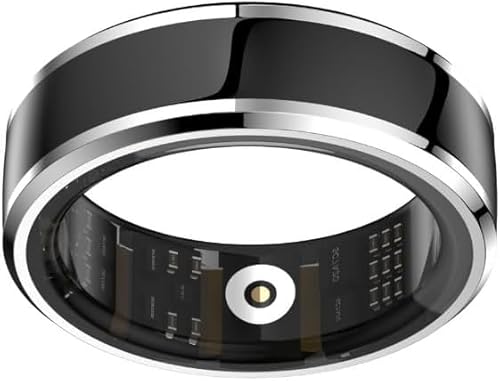P
Phyllis
Blood pressure drug may control genetic disease
By Lauran Neergaard
The Associated Press
Posted April 7 2006
WASHINGTON · Marfan syndrome is best known as the suspect behind Abraham Lincoln's gangly build. But for thousands in the United States, the genetic disease means living with the threat that their largest artery could burst suddenly and kill them.
New research is sparking hope that a popular blood pressure drug might finally protect them. The studies being published today are only in mice, but the drug Cozaar worked so well that the government is about to test it in babies and children with Marfan. Cozaar is the first medicine thought to possibly block the disease's deadly twist.
LocalLinks
"This breakthrough is so full of promise that people have chills," said Carolyn Levering, president of the National Marfan Foundation, which helped fund the research at Johns Hopkins University.
Hopkins' lead researcher, Dr. Harry Dietz, said, "We're now talking about the ability to prevent rather than attenuate or respond to manifestations of this disease. That's what makes this particularly thrilling."
The work not only sheds crucial new light on Marfan syndrome, but also might point to ways to prevent more common aortic aneurysms. These are weak spots on the body's largest artery that can kill someone within minutes if they burst.
About 30,000 Americans are estimated to be diagnosed with Marfan syndrome; some specialists suspect an equal number do not know they have the genetic disorder. Marfan is a disease of connective tissue, the body's scaffolding. Patients typically are tall and lean, with disproportionately long arms, legs, fingers and toes, plus a variety of skeletal, eye, lung and heart problems.
The life-threatening complication is a dangerous weakening of the aorta. Marfan occasionally makes headlines when an undiagnosed, seemingly healthy young athlete suddenly collapses from a burst aorta. Diagnosed patients who show signs of aorta trouble often are told not to exercise too vigorously, to avoid stressing that artery and may have repeated surgeries to patch it.
The new work, reported in the journal Science, suggests a drug already on the market to treat high blood pressure may block the aorta from weakening in the first place -- and heal the artery if it already is damaged.
That is what happened in mice genetically engineered to have a Marfan-damaged aorta. Dietz gave them either Cozaar, known chemically as losartan, or a dummy pill or a different type of blood pressure medicine. He included pregnant mice and 2-month-old rodents, the equivalent of a teenager.
Cozaar prevented aortic damage in newborn mice and after six months, the "teenage" mice had healed so completely that scientists could not distinguish them from healthy rodents, Dietz reported. The other Marfan-afflicted mice, in contrast, got worse.
By Lauran Neergaard
The Associated Press
Posted April 7 2006
WASHINGTON · Marfan syndrome is best known as the suspect behind Abraham Lincoln's gangly build. But for thousands in the United States, the genetic disease means living with the threat that their largest artery could burst suddenly and kill them.
New research is sparking hope that a popular blood pressure drug might finally protect them. The studies being published today are only in mice, but the drug Cozaar worked so well that the government is about to test it in babies and children with Marfan. Cozaar is the first medicine thought to possibly block the disease's deadly twist.
LocalLinks
"This breakthrough is so full of promise that people have chills," said Carolyn Levering, president of the National Marfan Foundation, which helped fund the research at Johns Hopkins University.
Hopkins' lead researcher, Dr. Harry Dietz, said, "We're now talking about the ability to prevent rather than attenuate or respond to manifestations of this disease. That's what makes this particularly thrilling."
The work not only sheds crucial new light on Marfan syndrome, but also might point to ways to prevent more common aortic aneurysms. These are weak spots on the body's largest artery that can kill someone within minutes if they burst.
About 30,000 Americans are estimated to be diagnosed with Marfan syndrome; some specialists suspect an equal number do not know they have the genetic disorder. Marfan is a disease of connective tissue, the body's scaffolding. Patients typically are tall and lean, with disproportionately long arms, legs, fingers and toes, plus a variety of skeletal, eye, lung and heart problems.
The life-threatening complication is a dangerous weakening of the aorta. Marfan occasionally makes headlines when an undiagnosed, seemingly healthy young athlete suddenly collapses from a burst aorta. Diagnosed patients who show signs of aorta trouble often are told not to exercise too vigorously, to avoid stressing that artery and may have repeated surgeries to patch it.
The new work, reported in the journal Science, suggests a drug already on the market to treat high blood pressure may block the aorta from weakening in the first place -- and heal the artery if it already is damaged.
That is what happened in mice genetically engineered to have a Marfan-damaged aorta. Dietz gave them either Cozaar, known chemically as losartan, or a dummy pill or a different type of blood pressure medicine. He included pregnant mice and 2-month-old rodents, the equivalent of a teenager.
Cozaar prevented aortic damage in newborn mice and after six months, the "teenage" mice had healed so completely that scientists could not distinguish them from healthy rodents, Dietz reported. The other Marfan-afflicted mice, in contrast, got worse.






















